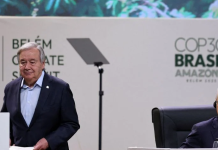SEOUL, NOV 21 (YONHAP/APP/DNA):The National Museum of Korea will open its first gallery dedicated to Islamic art, marking a major step in expanding its global cultural exhibitions.
The Islamic Art Gallery, located on the third floor of the museum’s Permanent Exhibition Hall, is set to open to the public Friday.
To commemorate the launch, the museum is hosting a joint exhibition with the Museum of Islamic Art in Doha, Qatar, titled “Islamic Art: A Journey of Splendor.” The show runs for 11 months and features 83 artifacts on loan from Doha.
Since launching the World Arts Gallery to showcase diverse cultural heritages, the National Museum has held a series of exhibitions from major museums around the world. This is the first time it is presenting Islamic culture in a permanent exhibition space.
“Since it is difficult for us to build a global collection of great works, we have sought ways to introduce Islamic art to local and international visitors through cooperation with leading institutions,” museum director You Hong-june said during a media preview of the exhibition at the museum Thursday.
You described Islamic culture as “a world of fantastic artistry,” noting its complex geometric and calligraphic patterns reflect a sophisticated and modern sensibility.
Shaika Nasser Al-Nassr, director of the Doha museum, said Korea and Qatar, though geographically distant, have long been connected through historical trade routes stretching from the Mediterranean to the Pacific.
She expressed hope that the upcoming exhibition would deepen cultural ties between the two nations while highlighting the global legacy of Islamic art.
The exhibition explores more than a millennium of Islamic art from the 7th to 19th centuries, divided into three sections: religious art; cultural exchange and expansion; and Islamic courtly art and manuscripts.
The first section focuses on religious art, considered the essence of Islamic artistic tradition, and features Quran manuscripts ranging from early parchment copies to large-scale texts from the Timurid Empire.
The exhibition space is architecturally designed with a domed roof and an octagonal layout to immerse visitors as if they were entering a mosque. Visitors can see a mihrab stone panel, mosque lamps, and prayer carpets decorated with arabesque and geometric patterns, as well as calligraphy in the room. Also on display are architectural elements such as wooden doors and decorative tiles.
The second section traces the development of Islamic culture from the Arabian Peninsula into a dynamic, cross-regional art form, showcasing artifacts like an astrolabe, an astronomical observation instrument, and various glass, ceramic and metal crafts, which reflect the assimilation of diverse artistic traditions.
The final section explores the artistic and scholarly pursuits that flourished in courts of the Islamic empires. Highlights include exquisite carpets, textiles, and jewelry and manuscripts. These manuscripts, created under royal patronage, are regarded not just as records of knowledge but as comprehensive cultural heritage blending religion, literature, history and science.
A major feature of the gallery is a media art recreation of the “Reception Room of a Nobleman in Damascus” — a signature space of the Doha MIA — designated to realistically convey the ambience of the golden age of Islamic culture.
Visitors can quietly conclude their journey in this space, relaxing on a sofa and appreciating light filtered through Islamic lattice window patterns.
The joint exhibition is scheduled to run till Oct. 11, 2026.

















